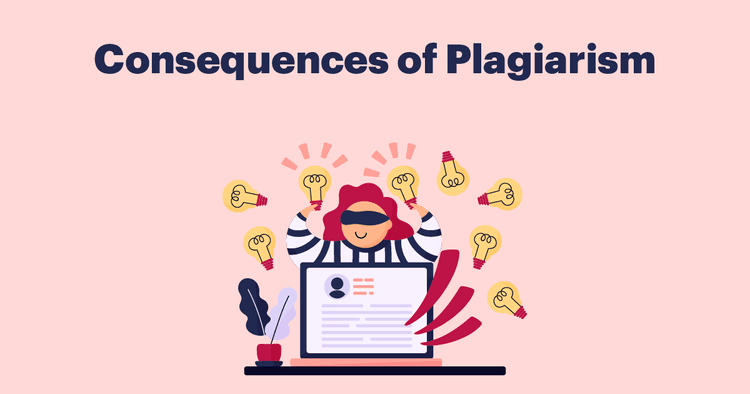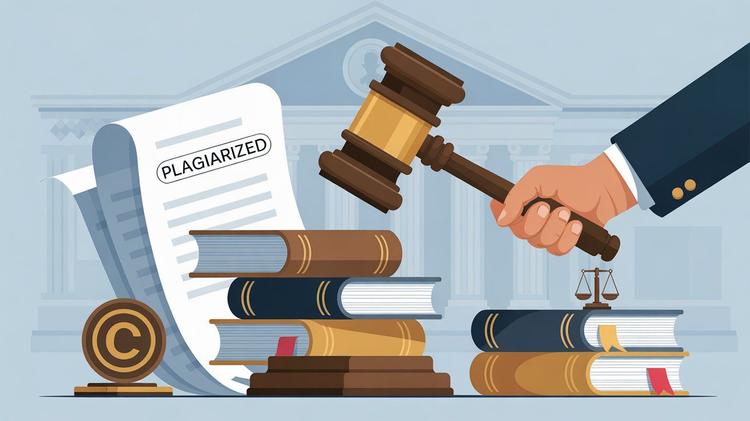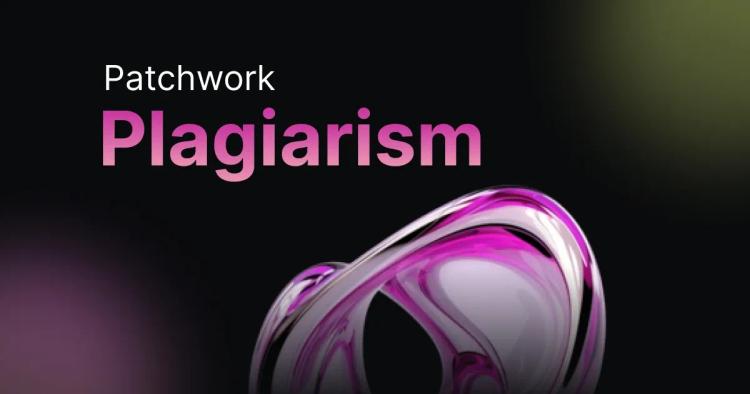Welcome to the captivating world of words, where each sentence is a brushstroke on the canvas of expression. In our journey today, we'll unravel the intricacies of paraphrasing, the shadows of plagiarism, and the mysterious realm we've dubbed "paraphrasing plagiarism."
Join us as we embark on this literary adventure, exploring the delicate balance between originality and imitation, and discovering the role of tools like CopyChecker in maintaining the ethical fabric of writing.
As we dive into the heart of this exploration, imagine the world of writing as a vast landscape, where ideas are the hills and valleys, and words are the rivers that shape the terrain. It's a place where every author adds their touch, creating a rich tapestry of thoughts.
Yet, within this tapestry, lies a delicate dance between creativity and imitation, and our guide for this journey is the subtle art of paraphrasing.
ᴀᴅᴠᴇʀᴛɪsᴇᴍᴇɴᴛDefining Paraphrasing and Plagiarism
Let's start with the fundamental building blocks of our literary world.
Paraphrasing is like a storyteller retelling an ancient tale in their own words. It's the art of taking an existing idea, understanding it deeply, and then expressing it using your unique voice. Think of it as taking a familiar melody and playing it on your instrument, adding your flavor while maintaining the melody's essence.
Now, on the flip side, we have the dark cloud called plagiarism. Picture this: you find a treasure chest of ideas, and instead of admiring them from a distance, you decide to claim the treasures as your own. Plagiarism is essentially taking someone else's work, ideas, or expressions and pretending you're the mastermind behind them.
In simpler terms, paraphrasing is like a respectful nod to an idea, giving it a fresh coat of paint, while plagiarism is like putting on a disguise and trying to be the original artist of a masterpiece that isn’t yours. One is the dance of creativity; the other is the shadowy realm of literary theft.
In our journey, we’ll also encounter a mysterious land – "paraphrasing plagiarism." Imagine this as a foggy forest where the path isn't clear, and writers may unintentionally lose their way. It’s where paraphrasing, meant to be an art, sometimes takes a wrong turn, and ends up imitating rather than creating.
The Fine Line Between Originality and Imitation
Understanding the Concept of Paraphrasing
Paraphrasing is like telling a story in your own words. Imagine you're retelling a funny incident you heard from a friend. You wouldn't repeat their words exactly; instead, you'd share the story using your language. That's the essence of paraphrasing—it's about putting information into your unique voice.
Now, let's say your friend's story was about a cat chasing its tail, and you decide to tell it but change a few details, like the color of the cat or the setting. That's paraphrasing! It's about adding your touch while keeping the main idea intact.
When Paraphrasing Becomes Problematic
But sometimes, paraphrasing can go off track. It's like playing the telephone game; the more it passes through different minds, the more it changes.
If you don't understand the story or try to change too much, you might end up with a version that doesn't capture the essence. That's when paraphrasing becomes problematic—it loses the magic of the original.
ᴀᴅᴠᴇʀᴛɪsᴇᴍᴇɴᴛPlagiarism: The Unethical Side of Writing
Types of Plagiarism
Now, let's talk about plagiarism. Imagine you're working on a group project, and everyone needs to contribute ideas. Plagiarism is like someone taking another person's idea and pretending it's their own. It's not sharing; it's more like taking a shortcut without giving credit.
There are different types of plagiarism. It can be as obvious as copying and pasting someone's work, but it can also be sneaky, like rearranging words without really understanding the meaning. It's a bit like trying to sneak a friend's snack without them noticing—it might seem harmless, but it's not right.
Consequences of Plagiarism in Academic and Professional Settings
Plagiarism has consequences. Think of it like playing a game but breaking the rules. In school, it can lead to low grades or even getting in trouble. Professionally, it's like getting caught taking someone else's work at your job; it could lead to losing your job or damaging your reputation.
So, the lesson here is to play fair. If you get an idea from someone, give them credit. It's like saying, "Hey, this was a great idea, and I'm using it too!" It's a win-win.
Now, let's navigate the tricky waters of "Paraphrasing Plagiarism" and see how tools like CopyChecker can help us stay on the right path.
"Paraphrasing Plagiarism": Navigating the Gray Area
Exploring Instances of Misguided Paraphrasing
Imagine you're trying to retell a story someone else wrote. You want to make it your own, right? That's paraphrasing.
But here's the twist: if you end up using too many original words and ideas without understanding them, it's like trying to repaint a picture without truly knowing what each brushstroke means.
It loses the magic, the soul, and that's what we call "paraphrasing plagiarism."
Let's break it down. Paraphrasing should be like a friendly chat with the original text, not a solo act that ignores the source. It's about grasping the essence of the idea, putting it in your own words, and still respecting where it came from.
If you just switch words around without truly getting what's being said, you might be unintentionally slipping into the gray area of "paraphrasing plagiarism."
ᴀᴅᴠᴇʀᴛɪsᴇᴍᴇɴᴛIdentifying and Avoiding "Paraphrasing Plagiarism"
How do you avoid this gray zone? First and foremost, it's about understanding. If you're paraphrasing, make sure you get what the original author is saying. Don't just replace words with synonyms; capture the core message.
And when in doubt, it's always a good idea to give credit where it's due. If an idea isn't yours, acknowledge the person who came up with it.
Think of it like cooking – you don't want to serve a dish that tastes exactly like someone else's. Add your spices and your flair. That's what makes it yours. So, in the world of words, respect the original, add your touch, and you'll steer clear of the gray area.
The Role of CopyChecker’s Plagiarism Checker Tool
Now, let's talk about CopyChecker – your digital writing companion. It's like having a superhero sidekick but for your words.
CopyChecker and other tools like it are there to make sure your writing is truly yours. They scan the vast sea of information out there to ensure your work stands out, like a unique star in the sky.
Picture this: you've crafted a beautiful piece of writing. Before you send it out into the world, CopyChecker does a quick check to see if anyone else has said the same things before. It's like a safety net, ensuring your work is genuinely original.
How Plagiarism Checkers Work
But how does it work? Well, these tools are smart detectives. They use fancy algorithms – think of them as secret codes – to compare your words with a massive database of existing content. If there are any similarities, they raise a flag.
It's not about catching you doing something wrong; it's about making sure your voice is loud and clear in the noisy world of words. Plagiarism checkers are like your writing allies. They help you present your best work by ensuring it's not accidentally echoing someone else's ideas.
It's like having a friend double-check your outfit before you step out – you want to look unique and fabulous, right? These tools help you do just that in the world of writing.
ᴀᴅᴠᴇʀᴛɪsᴇᴍᴇɴᴛBenefits of Using Plagiarism Checker Tools
Ensuring Originality in Your Writing
Plagiarism checker tools, like CopyChecker, are your trusty companions in the world of writing. Imagine you're crafting a beautiful piece of art – your words deserve to be original and uniquely yours.
These tools act as guardians, scanning your work against a vast library of texts to make sure no unintentional similarities creep in. With a clean bill of originality, you can confidently share your thoughts without worrying about unintentional mimicry.
Guiding the Editing Process
Beyond being guardians of originality, these tools are like expert editors. They don't just say, "Hey, this might be similar to something else." They also help you understand how to enhance your writing.
They suggest ways to refine your work, ensuring it's not just authentic but polished and ready for the spotlight. It's like having a writing mentor in digital form, guiding you to present your best work.
Time-Saving Magic
Manually scanning your work for plagiarism is like searching for a needle in a haystack. Plagiarism checkers speed up this process, providing a quick and thorough examination of your text. In the blink of an eye, you get insights that would take hours of manual effort. Time saved is creativity gained.
Common Challenges and Pitfalls with Plagiarism Checkers
False Positives: When Originality Raises Eyebrows
Picture this: you write a fantastic sentence, and the plagiarism checker raises a red flag. Panic sets in. But hold on – false positives happen. Sometimes, a brilliant idea or a commonly used phrase may trigger the alarm. Understanding that not all red flags mean trouble is essential.
It's like having a security system that occasionally mistakes your friends for intruders – a bit annoying, but better safe than sorry.
ᴀᴅᴠᴇʀᴛɪsᴇᴍᴇɴᴛFalse Negatives: When Plagiarism Sneaks Past
On the flip side, there's the challenge of false negatives. This is when the plagiarism checker needs to catch up on something that needs to be corrected. It's like having a guard who occasionally nods off – not ideal. To combat this, it's crucial to view the results with a discerning eye.
If something feels off, delve deeper. The tool is your assistant, not the boss, and your intuition plays a vital role in the final judgment.
Understanding the Nuances: It's All About Context
Plagiarism checkers operate on algorithms, and algorithms can't always grasp the subtleties of human expression. A flagged phrase might be a common saying or a fundamental concept that multiple people naturally arrive at. Context is key.
It's like having a language teacher who sometimes misses the humor in your jokes – they're good, but not perfect. Learning to interpret results with a pinch of human understanding ensures a more accurate assessment of your work.
In the end, these tools are your partners, not infallible judges. Embracing the benefits and understanding the challenges allows you to wield them effectively in your quest for original, polished writing.
It's a journey where technology and creativity shake hands, creating a harmonious symphony of authenticity.
FAQs
What Is Plagiarism?
Plagiarism is the act of using someone else's work, ideas, or expressions without proper acknowledgment, presenting them as your own. It's a breach of academic and ethical standards.
What Is Copyright?
Copyright is a legal protection granted to original works of authorship, giving creators exclusive rights to their creations. It prevents others from using, reproducing, or distributing the work without permission.
How To Avoid Paraphrasing Plagiarism?
To avoid paraphrasing plagiarism, understand the original content thoroughly, rephrase it in your own words and always credit the source. Ensure your interpretation adds value and a fresh perspective.
How do you paraphrase without plagiarizing?
Paraphrasing without plagiarizing involves grasping the core meaning of the original text and expressing it in your voice. Properly cite the source, and ensure your rendition is a genuine reflection of your understanding.
Does ChatGPT paraphrasing count as plagiarism?
Yes, ChatGPT's paraphrasing can be considered plagiarism if not properly attributed. Always credit the AI model for its contributions to your work, treating it like any other source of information or inspiration.
ᴀᴅᴠᴇʀᴛɪsᴇᴍᴇɴᴛConclusion
In this complex dance of words, where paraphrasing and plagiarism twirl on the same floor, finding balance is an art. Embrace the beauty of your unique expression, honor the origins of inspiration, and let tools like CopyChecker be your allies in the quest for authentic, ethical writing.
As you navigate the realms of words, remember – it's not just about what you say, but how you say it, with the heart and soul that only you can infuse into your narrative.







